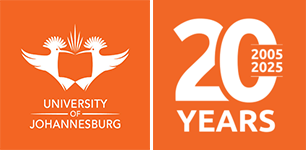PG Workshop: Remaking the World through Machine Learning
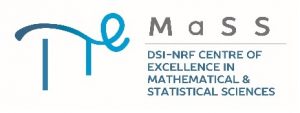
The PG Workshop: Remaking the World through Machine Learning (RWML) 2022 is funded by the DSI-NRF Centre of Excellence in Mathematical and Statistical Sciences (CoE-MaSS) under the focus area Machine Intelligence and Learning from Experience (MILE).
This event is hosted by the Data Science Across Disciplines (DSAD) Research Group based at the University of Johannesburg’s
Institute for the Future of Knowledge, the Faculty of Engineering and the Built Environment and the Faculty of Science at the University of Johannesburg. This is the 3rd workshop of an annual Postgraduate Workshop Series brought to you by academics and industry professionals from across multiple research fields, institutions, and sectors.
The theme of the workshop is the impact that Machine Learning tools, technologies, and algorithms, can have on the various social, economic, and technical hurdles we face daily. The fields of Data Science and Machine Learning allow us to apply a cross-disciplinary and complex lens to the multi-layered challenges of the 21st century. This event aims to educate postgraduate students with this in mind, so that they may not only envision, but also create, a more remarkable world.
The event will be both physical and virtual, with all talks presented in the morning streamed live for a larger audience, and afternoon practical sessions for postgraduate students hosted in the venue. Please Note: There is a limit on the number of persons that may attend the physical event, and preference will be given to PG students and speakers.
Dates: 21 – 25 November 2022
Venue: Online: Zoom Session (link to be provided upon registration);
Physical: Open Space B 5 Building, Auckland Park Campus, University of Johannesburg
Registration: Please register here for the workshop. Should you be a postgraduate student who wants to take part in the afternoon practical sessions, then be sure to indicate that you are a postgraduate student on the registration page and you will be contacted closer to the time.
Organising Committee:
Prof Charis Harley, Faculty of Engineering and the Built Environment, University of Johannesburg
Prof Alan Cornell, Department of Physics, Faculty of Science, University of Johannesburg
SCIENTIFIC PROGRAMME
21 November – Opti-Num Solutions
| Time | Event | Speaker | Title |
|---|---|---|---|
| 9:00 – 9:15 | Welcome | Alan Cornell | Opening Presentation |
| 9:15 – 10:00 | Motivational Talk | Mubeen Ebrahim | What to consider for a career in data |
| TEA BREAK 10:00 – 10:15 | |||
| 10:15 – 11:15 | Plenary Talk | Marco Rossi | AI and Machine Learning Research around the Globe |
| 11:15 – 12:15 | Plenary Talk | Adri van Nieuwkerk/ Jon Esteves | From Research to Development to Deployment – South African Case Studies from Opti-Num Solutions” |
| LUNCH BREAK 12:15 – 13:00 | |||
| 13:00 – 13:30 | Seminar | John Atherfold | Reality Check – How do we apply Machine Learning in the Real World |
| 13:30 – 15:00 | Workshop | John Atherfold & Jon Esteves | Applying Machine Learning to an Industry Problem |
22 November – Physical Sciences
| Time | Event | Speaker | Title |
|---|---|---|---|
| 9:00 – 10:00 | Plenary Talk | Harold Erbin | Machine learning for string theory and geometry |
| TEA BREAK 10:00 – 10:15 | |||
| 10:15 – 11:15 | Plenary Talk | Simon Connell | Interdisciplinary R&D towards innovation and commercialization |
| 11:15 – 12:15 | Plenary Talk | Alan Cornell | Boosted Decision Trees in the era of new physics |
| LUNCH BREAK 12:15 – 13:00 | |||
| 13:00 – 13:30 | PG Student Talk | Anele Ncube | Using physics-informed neural networks to compute quasinormal modes |
| 13:30 – 15:00 | PG Practical | Anele Ncube | The Use of Physics Informed Neural Networks |
23 November – Finance
| Time | Event | Speaker | Title |
|---|---|---|---|
| 9:00 – 10:00 | Plenary Talk | Terence van Zyl | Advances in Multivariate Forecasting with applications in finance |
| TEA BREAK 10:00 – 10:15 | |||
| 10:15 – 11:15 | Plenary Talk | Jameel Hiebner | Automating Claims Decisioning with Machine Learning |
| 11:15 – 12:15 | Plenary Talk | Reyhana Satar | AI in Praxis |
| LUNCH BREAK 12:15 – 13:00 | |||
| 13:00 – 15:00 | PG Practical | Leo Breedt | Pricing Options using Reinforcement Learning |
24 November – Healthcare
| Time | Event | Speaker | Title |
|---|---|---|---|
| 9:00 – 10:00 | Plenary Talk | Byron Jacobs | Applied Mathematics as a Preprocessor for Data Driven Science in Medtech: Data driven problem solving from applied mathematics to clinical implementation |
| TEA BREAK 10:00 – 10:15 | |||
| 10:15 – 11:15 | Plenary Talk | Temweka Chirwa | Image Based Analysis for Medical Diagnostics Tools |
| 11:15 – 12:15 | Plenary Talk | Faraimunashe Chirove | Insights from mathematical modelling: Traversing the journey for future infectious diseases problem solutions |
| LUNCH BREAK 12:15 – 13:00 | |||
| 13:00 – 15:00 | PG Practical | Temweka Chirwa | Image Classification using pre-trained Convolution Neural Networks |
25 November – Education
| Time | Event | Speaker | Title |
|---|---|---|---|
| 9:00 – 10:00 | Plenary Talk | Saadia Essa | Personalised Adaptive Learning based on Deep Neural Networks |
| TEA BREAK 10:00 – 10:15 | |||
| 10:15 – 11:15 | Plenary Talk | Wade Naylor | Data types in education and the use of the Rasch model and item response theory to create adaptive learning environments |
| 11:15 –12:00 | Motivational Talk | Wesley Doorsamy | Unlocking rich data analyses in Higher Education research |
| LUNCH BREAK 12:15 – 13:00 | |||
| | |||
THEMES
Opti-Num Solutions
A team from Opti-Num Solutions will present on a wide variety of relevant topics, which highlight the local and global impact of AI and Machine Learning Research. They will take us through the steps required to develop an idea into reality, by moving from conceptualisation to deployment for a South African Case Study.
They will also host a workshop on “Applying Machine Learning to an Industry Problem”. Here they will provide the attendees with a real industry problem to solve during the workshop.
Physical Sciences
High energy physics has been using machine learning for almost 30 years, in particular in the context of the searches for the Higgs boson at the Large Electron-Positron (LEP) collider at CERN in the 1990s and early 2000s. Multivariate analyses and neural network methods were used to exploit the data in the best possible way, by making use of the different functional behaviours of the signal and the backgrounds on a large set of kinematic variables. This helped to increase the sensitivity to the signal compared with more traditional analyses involving sequential conditions in the event selection process. With the hadron collider era of the last 20 years (i.e. with the Tevatron collider at Fermilab and the LHC at CERN), machine learning has become routinely used, especially with the advent of deep learning in the last decade, that opened new avenues in the usage of machine learning in research. Thanks to patterns that can be learned from (real or simulated) data, backgrounds and signals can be distinguished to a level rarely obtained by any other means.
Quantum computing harnesses quantum mechanical effects, such as superposition, entanglement and interference, to do computation. Whilst the quantum devices available today are still noisy and limited in their ability, the promise of universal quantum computing has given rise to the field of quantum machine learning — an emerging discipline that aims to exploit quantum computation to find synergies between quantum information processing and machine learning. Quantum-enhanced machine learning algorithms have the potential to revolutionise many industries and could lead to new drug discoveries, better optimisation algorithms and more robust financial models. Although research exhibits potential, there is still much to uncover in the field of quantum machine learning.
Finance
Machine Learning in finance has become more prominent recently due to the availability of vast amounts of data and more affordable computing power. In fact, Machine Learning algorithms are reshaping the financial services industry in a variety of ways, often leading to cutting edge research. Leading banks and financial services companies are deploying AI technology, including Machine Learning, to streamline their processes, optimise portfolios, decrease risk and underwrite loans amongst for instance.
Healthcare
The use of Machine Learning in Healthcare is exploding, given the variety of ways in which such tools can be utilised. These algorithms can provide immediate benefit where processes are reproducible or standardised. Where there are large image datasets, such as radiology, cardiology, and pathology, Machine Learning is the ideal tool given its versatility. Machine Learning algorithms can be trained to look at images, identify abnormalities, and point to areas that need attention, thus improving on the accuracy of all these processes. It also supports the development on a more objective opinion to improve efficiency, reliability, and accuracy of diagnoses.
Education
Machine learning is transforming education in many different ways, and hence leading to multiple adaptations in teaching, learning, and research. Educators are able to use machine learning to identify students that are struggling, so that they lend assistance much sooner, predict the student’s mindset and needs, as well as expand the reach and impact of online learning content through localization, transcription, text-to-speech, and personalisation. Personalised learning is of particular importance, since it supports customised and individual requirements and allows students to guide their own learning.
INVITED/PLENARY SPEAKERS
INVITED SPEAKERS
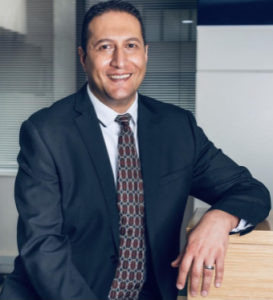
Mubeen Ebrahim
PartnerHero
Mubeen Ebrahim has worked in Data Management for 17 years. He’s worked at
ABSA, FNB, Standard Bank and Liberty. Currently he works for PartnerHero. He’s studied through
UNISA, UJ and WITS, and his career passions are developing people and working with data.
PLENARY SPEAKERS
Opti-Num Solutions
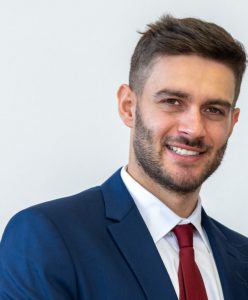
Marco Rossi
EDU Customer Success Engineer
MathWorks
Marco Rossi is member of the MathWorks Academia Team and supports lecturers and researchers in the use of MATLAB and Simulink for teaching and research. Since 2020, Marco runs curriculum development projects in South Africa, Turkey, Hungary, and many other Universities in East Europe. Marco graduated in Aeronautical Engineering from La Sapienza in Rome. Since 2015 he worked as Assistant Researcher at TU Dresden in Germany, where in 2019 he obtained a PhD in Mechanical Engineering due to his work on modelling and simulation of soft materials. Marco taught several courses during his academic experience including statics and intelligent materials.
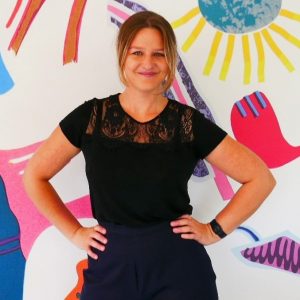
Adri van Nieuwkerk
Edu- Team Lead
Opti-Num Solutions
Adri completed a Bachelor of Science in Ecology and Conservation, followed by a Postgraduate Certificate in Education from the University of the Witwatersrand. Her passion for the sciences and education led her to Opti-Num Solutions where she began her journey collaborating with lecturers on integrating computational software into their curriculum. Adri now leads a cross-disciplinary team of STEM enthusiasts with the goal of engaging, supporting, and partnering with lecturers and students to enhance STEM curriculum, learning experience, research quality and output. The team delivers mentorship, coaching and computational software licensing and training to universities in southern Africa.
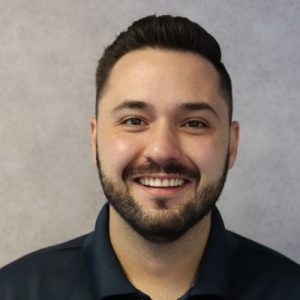
Jon Esteves
Senior Consultant – Software Engineering
Opti-Num Solutions
Adaptive and reliable applied mathematician with a diverse skill set and experience as an in-house and freelance consultant/solutions engineer. Passionate about process optimisation through mathematical modelling and simulation using technologies such as MATLAB, Mathematica and Fortran. Challenge driven with a desire for deep problem understanding and successful solution production. Confident client-face collaboration with strong communication skills. An appreciation for sustainable, robust solution production and constant skill investment, focused in a software solution development trajectory.
I am text block. Click edit button to change this text. Lorem ipsum dolor sit amet, consectetur adipiscing elit. Ut elit tellus, luctus nec ullamcorper mattis, pulvinar dapibus leo.
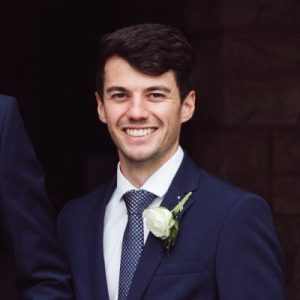
John Atherfold
Senior Data Scientist & Consultant Specialist – Software Engineering
Opti-Num Solutions
John Atherfold is currently a Senior Data Science and Modelling Specialist at Opti-Num Solutions. He has a background in Mechanical Engineering and Computer Science. John is passionate about applying intelligent algorithms to solve real-world problems across multiple domains, including mining, manufacturing, and commerce.
Physical Sciences
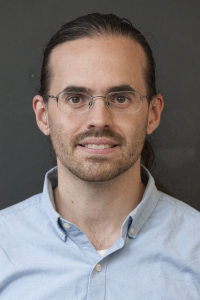
Dr Harold Erbin
MIT, IAIFI (Boston), CEA-LIST (Paris)
Dr Harold Erbin obtained his PhD in theoretical physics from Pierre et Marie Curie, Paris 6 University. He is currently a Marie Skłodowska-Curie fellow at MIT and IAIFI (Boston) and CEA-LIST (Paris). Besides working at the intersection of machine learning, physics and mathematics, his interests include string field theory, two-dimensional gravity, black holes, supergravity and tensor models.
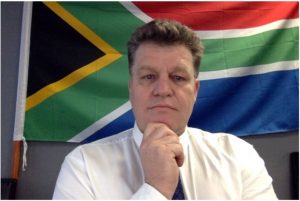
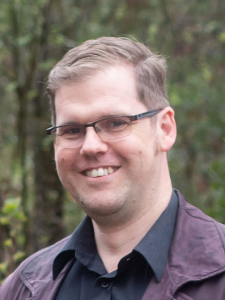
Prof Simon Connell
Department of Mechanical Engineering Science
Faculty of Engineering and the Built Environment
Prof Connell is Professor of Physics within the Faculty of Engineering and the Built Environment at the University of Johannesburg. He has research interests in Particle, Nuclear, Quantum and Applied Physics, Nuclear Energy, Materials Science, High Performance Computing and Innovation. He is a past president of the South African Institute of Physics. He is the founding member of the SA participation in High Energy Physics at ATLAS at CERN and also a User of the ESRF. He has published over 170 papers in International Journals and is also an ATLAS author with over 600 ATLAS papers. He has a Scopus H-index of 78 with over 27,000 citations. He is interested in technology and innovation for competitive industry (particularly in peaceful applications of nuclear technology) and has a project on the intelligent sensor-based sorting of diamond in kimberlite. He supports Nuclear Energy, both large scale generation and also Small Modular Reactors. He has worked on Open Source Monte Carlo Nuclear Engineering code development and also on Fibre Optic based on-line, in-core, real-time 4IR sensing for reactors. He also works on the implementation of the roadmap towards the African Light Source (chair: Exec). He is also on the steering committee developing the current community driven African Strategy for Physics.
Prof Alan Cornell
Department of Physics
Deputy Head of Department: Research
Faculty of Science
Professor of theoretical particle physics, having obtained his PhD from the University of Melbourne, Australia. He has previously worked at the Korean Institute for Advanced Studies (Seoul, Korea), the Yukawa Institute for Theoretical Physics (Kyoto, Japan), the Institut de Physique Nucléaire de Lyon (France) and the University of the Witwatersrand. He is a member of the SA-CERN programme, the Inter-experimental Machine Learning working group at CERN, the Future Circular Collider collaboration, and the chair of the Theoretical and Computational Physics division at the SAIP.
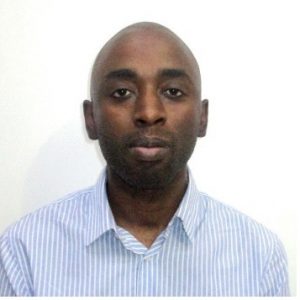
Anele Ncube
MSc in Physics Student
Department of Physics, University of Johannesburg
Anele Ncube’s studies focus on gravitational physics, particularly the quasinormal modes of black holes and how physics-informed machine learning can be best used in computational aspects of physics. Recently, he completed his MSc in Physics and is working towards studying at the PhD level, where he intends to undertake a more in-depth study of physics-informed neural networks in the context of gravitational and particle physics. He is also interested in machine learning within industry, where he is assisting to develop ways for AI to recognise sentiment within text and speech.
Finance
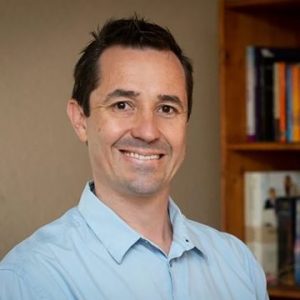
Prof Terence van Zyl
Nedbank Research Chair
Institute for Intelligent Systems
University of Johannesburg
Prof van Zyl holds the Nedbank Research and Innovation Chair at the University of Johannesburg, where he is a Professor at the Institute for Intelligent Systems. He is an NRF-rated scientist who received his PhD and MSc in Computer Science from the University of Johannesburg for his thesis on agent-based complex adaptive systems. He has over 15 years of experience researching and innovating large-scale streaming analytics systems for government and industry. His research interests include data-driven science and engineering, prescriptive analytics, machine learning, meta-heuristic optimisation, complex adaptive systems, high-performance computing, and artificial intelligence.
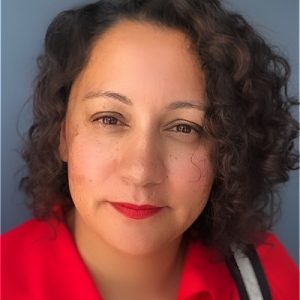
Reyhana Satar
Absa Head of Infrastructure
Optimisation and Placement
Physical Channels
Absa – Everyday Banking
Reyana was the at RMJM. She holds degrees from Wits University and the University of Cape Town and has studied System Thinking at
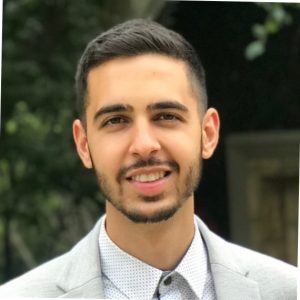
Jameel Hiebner
Data Science Lead
Telesure Investment Holdings
Jameel is a Data Science Lead at TIH (Telesure Investment Holdings) where he manages a team of Data Scientists focusing on improving claims processing and identifying and managing risk. He studied Mathematics and Economics at the University of Witswaterstrand and graduated in 2016. Since then, he’s worked on a variety of projects ranging from developing applications to monitor data quality, optimising marketing campaigns, automating tasks using RPA and developing and implementing ML models.
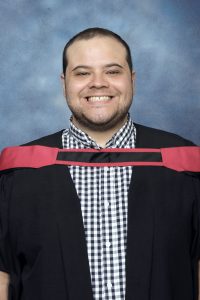
Leo Breedt
Solutions Engineer
Opti-Num Solutions
Leo pursued a BSc(Hons) in Aeronautical Engineering at the University of the Witwatersrand where he realised his passion for complex problem solving of real-world problems through simulation. He enjoys working with clients to understand their critical business needs and collaborate to find effective and efficient solutions. Leo now provides solutions to clients in the finance sector oriented around data analytics, model development, software engineering and enterprise model deployment.
Healthcare

Prof Byron Jacobs
Department of Mathematics and Applied Mathematics
University of Johannesburg
Prof Jacobs is an Associate Professor at the University of Johannesburg in the School of Mathematics and Applied Mathematics. His research focuses on Fractional and Partial Differential Equations, Numerical Methods and Analysis thereof, as well as Signal and Image Processing. The application of differential equations for image processing provides a mathematically rigorous framework for the construction of novel and dynamic processing techniques to achieve desirable results for image processing, rendering them suitable as pre-processing steps for Machine Learning based classification tasks.

Temweka Chirwa
Data Scientist
Perinatal HIV Research Unit
Temweka Chirwa is a Civil Engineer turned Data Scientist. She currently works as a data scientist for the Perinatal HIV Research Unit, a medical research unit of Wits University at Chris Hani Baragwanath Hospital. She is currently working towards her PhD at the University of Johannesburg, focusing on different applications of data science and artificial intelligence in medical research and diagnostics. Her interests include computer vision, image based analysis and natural language processing.
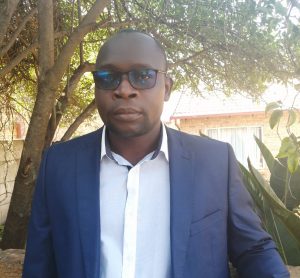
Prof Faraimunashe Chirove
Mathematics and Applied mathematics
Faculty of Science
University of Johannesburg
Prof Faraimunashe Chirove is a NRF C2 rated (South Africa) scientist and holds a PhD (2011) in Mathematics (Mathematical Biology) from University of Botswana. His vision is to be one of the leading bio-mathematicians both nationally and internationally producing high quality and high impact research. His broad research objective is ‘from omics to population dynamics’, an objective that seeks to understand, interpret, explain, and account for the impact of infection across different hierarchical levels within and without the human body. Currently he is largely doing most of his research at cellular level and population dynamics predicting the impact of the cellular infection on the population dynamics and vice versa on human infectious diseases. His research interests have expanded into mathematical ecology, data-based modelling, agent-based modelling, applications into zoonotic diseases, stochastic modelling, multi-scale modelling, antimicrobial resistance in agricultural settings and, systems mathematical biology. He is also focusing on multi-and interdisciplinary research as to make his modelling skills manifest into realistic impact on public health and animal health policies.
Education
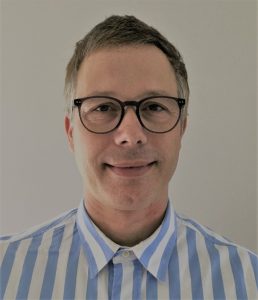
Dr Wade Naylor
InstP, PhD, GDPE, MSci
Lecturer Science & Maths Education
Faculty of Education and Arts
Wade is a lecturer in Education at Australian Catholic University, specialising in physics and maths education. A former theoretical physicist in the UK and Japan he spent over 15 years investigating the dynamical Casimir effect and developed a novel mathematical approach to solving black hole quasinormal modes. After taking the plunge on a graduate diploma course, he spent over five years teaching physics and mathematics at high schools in Queensland. His education research areas predominantly focus on conceptual understanding in physics and mathematics. Wade is also a Visiting Senior Research Associate at the Physics Department, University of Johannesburg, South Africa.
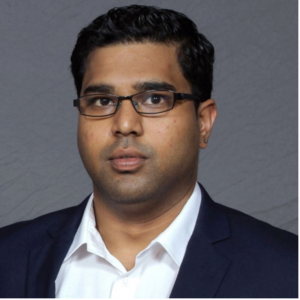
Dr Wesley Doorsamy
School of Electronic and Electrical Engineering
University of Leeds
Dr Wesley Doorsamy is based at the School of Electronic and Electrical Engineering at the University of Leeds. Prior to joining the University of Leeds, he was based at the University of Johannesburg at the Institute for Intelligent Systems. Wesley obtained his BSc in Electrical Engineering, MSc in Engineering and his PhD from the University of Witwatersrand. He also obtained the graduate diploma in Data Science from the University of London, and completed the Postgraduate Diploma in Higher Education (with distinction). He is actively engaged in the Scholarship of Teaching and Learning (SoTL) with a focus on curriculum development. His primary research areas are in condition monitoring and applied machine learning. He was previously awarded the Freestanding and Scarce Skills scholarships and is rated as a Researcher by the National Research Foundation (NRF) of South Africa. Wesley is an affiliate of the African Academy of Sciences (AAS), a member of the Association for Computing Machinery (ACM) and a Senior Member of the Institute for Electrical and Electronics Engineers (IEEE).

Saadia Essa
Department of Computer Science
Faculty of Information & Communication Technology (ICT)
Tshwane University of Technology
Saadia Essa is a Lecturer in Computer Science at the Tshwane University of Technology. She is currently studying/working towards her PhD at the School of Electrical & Information Engineering at the University of Witwatersrand. Saadia’s research focuses on the impact of how e-learning can be enhanced through using AI technologies to achieve more intelligent and personalised adaptive e-learning environments. She is interested in the application of Deep Neural Network architectures to classify types of learners to optimise individual learning by providing resources to match learners’ learning styles. She received her undergraduate Bachelor of Science at the University of the Witwatersrand and her Honours and Masters in Computer Science at the University of South Africa.
ABSTRACTS
Plenary Speakers
“AI and Machine Learning Research around the Globe” ”
Marco Rossi
Artificial intelligence (AI) is driving a massive change in the way engineers, scientists, and programmers develop and improve products and services. All engineering fields today use AI in one form or another, and many of today’s industrial challenges call for engineers prepared to incorporate AI into their workflows. Find out how MathWorks tools empower engineers, including those with minimal AI experience, to develop better systems that use AI workflows. Additionally, we will discuss how to accelerate the incorporation of AI in engineering courses. You will walk away from this session with a better understanding of how a constant dialog between industry and academia can prepare engineers for the AI megatrend
“From Research to Development to Deployment – South African Case Studies from Opti-Num Solutions”
Adri van Nieuwkerk/Jon Esteves
Join Adri and Jon in a seminar about Opti-Num’s journey with Research & Development in Industry. She will share experiences and lessons learnt from Opti-Num’s partnerships with industry.
“Reality Check – How do we apply Machine Learning in the Real World”
John Atherfold
Dealing with real-world process data is a challenging problem. In this talk we explore a full applied machine learning workflow, touching on topics such as Data Pre-processing, Model Training and Testing, and Architecture Design and Deployment. The results coming out of this study were applied on a live system, and the impact of the solution was less time lost to breakdowns in the production process, and an overall production increase.
“Machine learning for string theory and geometry”
Harold Erbin
String theory is one of the most promising candidates for a theory of quantum gravity and unification. It assumes that gravity and the Standard Model of particles can be described by tiny vibrating strings. Since the theory is consistent only in a 10-dimensional spacetime, one must hide 6 dimensions through a procedure called “compactification”. Constraints imply that this space must be a Calabi-Yau manifold, whose shape determines the properties of the observable low-energy effective theory. Moreover, the traditional formulation (“worldsheet”, first-quantized) contains many limitations and an important endeavor is to rephrase string theory in the more modern language of field theory (second-quantized). For both topics, one needs to solve difficult geometrical problems for which current methods fall short. In this talk, I will show how machine learning can help to compute topological properties of Calabi-Yau manifolds and build the string field theory action by determining appropriate minimal area metrics.
Simon Connell
Two 4IR projects which began as fundamental research at the ATLAS experiment at CERN, but which lead to technology transfer, are now being commercialized. The first is a called MinPET as it is an application of the medical diagnostic technology known as Positron Emission Tomography (PET) to the sorting of diamondiferous from barren kimberlite rocks in an online scenario. It also uses a high-power electron linear accelerator (E = 40MeV and P = 200kW) to produce PET isotopes within the kimberlite, where the 11C activity dominates after 20 minutes, allowing one to visualize diamonds as a carbon density distribution hot spot in a more dilute uniform carbon background (from carbonates in the kimberlite) in 3D. The benefits are less breakage, energy and water in diamond recovery. The second project is developing fiber optical sensors (FOS) for nuclear power reactors which represent a radiation hard environment. These will be first-of-a-kind, in-core, on-line, real-time sensors that can improve safety and efficiency. The novel technologies include modern novel sensors (detectors), intelligent front-end electronics, high throughput electronics, big data analytics, AI, high-performance computing for on-line processing and off-line simulation. This presentation will review projects, highlighting the science and also the progress to commercialization.
Alan Cornell
Machine learning algorithms are growing increasingly popular in particle physics analyses, where they are used for their ability to solve difficult classification and regression problems. While the tools are very powerful, they may often be under- or mis-utilised. In the following, we investigate the use of gradient boosting techniques as applicable to a generic particle physics problem comparing to a traditional cut-and-count approach. In particular, we interrogate the use of metrics in imbalanced datasets which are characteristic of high energy physics problems, offering an alternative to the widely used area under the curve (auc) metric through use of the F-score metric. We present a comparison of feature selection and investigation using a principal component analysis, Shapley values, and feature permutation methods.
“Advances in Multivariate Forecasting with applications in finance”
Terence van Zyl
Traditionally, point forecasts and prediction intervals have been performed by statistical approaches. In recent years there has been a shift to deep learning techniques, as highlighted by their dominance in the M competitions. In this talk, we explore some of these advances in the context of finance.
Automating Claims Decisioning with Machine Learning
Jameel Hiebner
How can we improve our customer’s experience? How can we speed up our claims process?
As Data Scientists at TIH, we are asked questions like these and many more every day. In this presentation we’ll take you through how we’ve used data science and machine learning to answer these questions and, in addition, how we’ve helped our business manage risks and deliver on its strategic objectives.
Reyhana Satar
Reyhana will discuss the practical application of Machine Learning in Finance.
Byron Jacobs
Access to large, high-quality datasets are often a requirement for successful machine learning based solutions. However, publicly available datasets are often of poor quality, inconsistent, unverifiable and may not be transferable to a new application domain. Can one bootstrap a minimal, high quality dataset by leveraging quantitative analysis and traditional applied mathematical tools such as mathematical modelling with PDEs and image processing? This talk discusses the hurdles faced in specialised data driven applications, specifically within medical technology and some ideas to surmount them.
Temweka Chirwa
Tuberculosis (TB) is one of the oldest diseases in the world, and a leading cause of mortality in a pre-COVID pandemic world. Different diagnostics tools and treatment options have been developed over time, to varying degrees of success. Two such developments are lateral flow urine lipoarabinomannan (LAM) assays to diagnose TB in patients with HIV, and the use of Clofazimine to treat multidrug resistance TB (MDR-TB).
LAM assays are a low cost point of care test performed on patients unable to produce sputum for standard TB tests. The assay test, however, relies on visual inspection to determine a diagnosis, which can be riddled with subjectivity as the result may vary significantly in intensity. Thus, our goal was to develop an image-based algorithm that can standardise the interpretation of the LAM assays.
Clofazimine, a drug originally for leprosy, to treat multi-drug resistant TB (MDRTB). However, patients have suggested that the drug changes their skin pigmentation, typically, making their skin temporarily darker. This has led some patients to not take their medication for the stipulated period. Using longitudinal photographs taken at follow up visits to monitor and quantify changes in a patient’s skin pigmentations, can help doctors identify patients who may require counselling to complete the drug course.
Using mathematical and machine learning algorithms, we developed algorithms tools for tuberculosis detection and skin pigmentation quantification from image based data.
“Insights from mathematical modelling: Traversing the journey for future infectious diseases problem solutions”
Faraimunashe Chirove
History on population invasions by deadly pathogens (emerging and re-emerging) causing health emergencies has been continuously documented. Epidemiologists, during a disease outbreak, obtain and analyze observed data and use the data, observations, science, and theory to identify the pathogens to plan and/or implement policies to reduce/eradicate the disease impact. Key to their work is understanding the causes and modes of transmission of each disease within and across populations at risk. Mathematical models played and increasingly continue to play a critical role in both short- and long-term planning for controlling the dynamics of a disease by providing frameworks for those who want to use modeling and computational tools in epidemiology to contribute to the study of the transmission dynamics and control of the disease. We share some insights gained so far from mathematical modelling of infectious diseases within the host and population dynamics and across the scales to appreciate the role of mathematical models in epidemiology and related fields.
“Personalised Adaptive Learning based on Deep Neural Networks”
Saadia Essa
Adaptive e-learning provides a favourable solution to address the challenge of personalising e-learning and enhancing the efficiency of online education systems. Student characteristics such as learning styles (LSs) are important to consider in the implementation of efficient adaptive e-learning systems (ALS). By identifying accurate LSs, ALS can use the information to provide more accurate personalisation leading to benefits for students and instructors. Traditional methods to determine student learning style involves filling in a questionnaire. However, learning styles are continuously changed during the learning process and are dynamic, whereas the results obtained from the questionnaires are static. As such, an artificial intelligence-based framework is presented to impart personalised adaptive education utilising Deep Neural Networks architectures as an automatic means to recognise dynamic LSs. The importance of such systems is due to their ability to assist educators, to provide more accurate guidance to students leading to an enhanced personalised approach to learning. The presented approach is still a work in progress based on my PhD research titled Personalised Adaptive Learning based on Deep Neural Networks.
Wesley Doorsamy
Higher education is a social construct with all its nuanced relationships, strongly embedded contexts, and deep ontological and epistemological foundations. Therefore, research and associated data, in the higher education area is often complex and multifaceted. The complex nature of the higher education research data albeit challenging lends itself to creative, original and rich qualitative analyses. This talk will examine some of the ways in which modern data analytics can be used to unlock new dimensions towards enriching analyses in higher education research. We look at specific examples of studies where qualitative data were ported to create novel visualisations and yield new dimensions and explanatory powers to the research.
Wade Naylor
In this plenary talk I will first discuss the issue of how psychometric testing of conceptual understanding is usually performed in education in terms of an inventory. I will talk of my own experience in physics education and our foray into the field of education in relation to the widely used “force concept inventory” (FCI). This could be applied to any subject psychometric testing is used. Various issues concerning the FCI in terms of how pre-test and post-test scores are interpreted as conceptual gains are considered and leads to a discussion of approaches to better deal with psychometric data by using various statistical approaches including the use of the Rasch model and information response theory (IRT). I will introduce the Rasch model as a simple example of a two-parameter model which is related to IRT. The beauty of the Rasch model / IRT is that with a large enough set of questions (a question bank) these methods could be used to form adaptive learning of questions in real time – the use of the Rasch model / IRT for pre-tests in itself gives the educator an elegant way to check which concepts need to be emphasised in their teaching.
Practical Sessions
“Applying Machine Learning to an Industry Problem”
John Atherfold & Jon Esteves
Explore real world data and apply your skills to a predictive maintenance problem. Can you predict the Remaining Useful Life of aircraft engines, given run-to-failure data?
Anele Ncube
The use of this type of universal function approximator, which can embed the knowledge of any physical laws that govern a given data-set, will be reviewed in this tutorial. Note that most of these problems can be described by partial differential equations, where prior knowledge of the general physical laws is present in the training of neural networks through a regularisation agent that limits the space of admissible solutions. This increases the correctness of the function approximation, however this can also create problems, as we shall discuss here.
Leo Breedt
Are you interested in using technology to build dynamic pricing models or using AI techniques in finance?
In this workshop we will build a Reinforcement Learning (RL) model that can be used to price hedging options. In addition, we show how this RL strategy outperforms a benchmark Black-Scholes Model (BSM) by comparing the performance of an RL strategy when transaction costs are introduced. A complete data science workflow will be unpacked in this workshop.
Temweka Chirwa
Skin cancer is an abnormal growth of skin cells, and is one of the most common cancers; unfortunately, it can also be deadly. Using deep learning and neural networks we will consider a skin disease classifier that tries to distinguish between benign (nevus and seborrheic keratosis) and malignant (melanoma) skin diseases from only photographic images using TensorFlow framework in Python.
Student Presentations
“Using physics-informed neural networks to compute quasinormal modes“
Anele Ncube
In recent years there has been an increased interest in neural networks, particularly concerning their ability to approximate partial differential equations. In this regard, research has begun on physics-informed neural networks (PINNs), specialised deep neural networks that incorporate within the loss function equations that govern physics phenomena; namely, differential equations and associated boundary conditions. We have investigated the feasibility of computing the quasinormal modes (QNMs) of non-rotating black holes in 4-dimensional space-time using PINNs. We find that it is achievable using unsupervised neural networks capable of solving eigenvalue problems (dubbed the eigenvalue solver here). Comparing with the QNMs obtained via more established methods (namely, the continued fraction method and the 6th-order Wentzel, Kramer, Brillouin method), the PINN computations share the same degree of accuracy as these counterparts. In other words, the PINN approximations had percentage deviations as low as In terms of the time taken to compute QNMs to this accuracy, however, the PINN approach falls short, leading to our conclusion that the method is currently not recommendable when considering overall performance.
Disclaimer: The University of Johannesburg encourages academic debate and discussion that are conducted in a manner that upholds respectful interaction, safety of all involved, and freedom of association as enshrined in the law, the Constitution, and within the boundaries of the University policies. The views expressed during events are expressed in a personal capacity and do not necessarily reflect the views of the University of Johannesburg.
